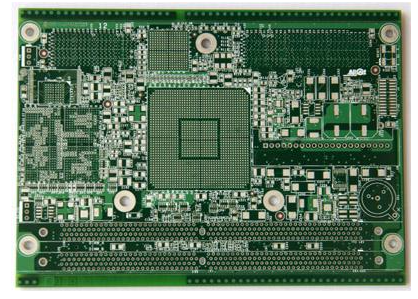The faster you go, the more you need to know: the role of PCB laminates in achieving high-speed data rates.
The good news is that the latest version of the IC makes it possible to send data at up to 32Gb/S (and higher) through the differential pairs in the PCB. The bad news, or more precisely, the challenge that has been put into the industry is that at these speeds, very small changes used to make PCB laminates can disrupt the data path, if you don’t pay attention to how these paths are designed and manufactured . And, one of the variants of the data link in the destruction path is tilt.
Starting from the basis of the problem, the skew is the misalignment of the two signal edges of the differential pair when they reach the terminals of the differential receiver. The result of the tilt is very simple. When the above misalignment is severe enough, the links in the data path may no longer function.
At this point, it is useful to define differential pairs and check how they operate:
A differential pair is a signal path, which has two equal and opposite signals propagating on two paths. The receiver detects the "differential" voltage at its input and determines whether the data bit is 1 or 0. The receiver is designed to ignore "common mode" components. The signal is usually a voltage offset. This is the main advantage of this signaling protocol.
Why does PCB laminate affect high-speed data rates

It is not a problem to determine the physical length of matching two different signals. This is the result of the following factors:
Modern IC technology can maintain package level alignment at 1 ps. Modern PCB layout tools and connector manufacturing can match the length to 1 ps. Based on these factors, consideration and management deviation seems to be an engineering dunk. If it were not for some less obvious source of skew, this would certainly be the case.
The skewed hidden "trap"
The difference path or misalignment of the length of the differential signal is the cause of the tilt. In addition, the skew may be the result of the difference in speed of the two differential signaling paths. In both cases, the cause of skew is the result of the glass weave used in the PCB laminate. Specifically:
The difference in path length measured on the 14-inch path is as large as 37 pS, which is caused by uneven glass weaving in the laminate. (This is more than one bit period at 28Gb/S.) The speed difference of the differential signal pair occurs when one side of the pair travels on the resin and the other side travels on the glass on the PCB laminate. The side traveling on the resin will travel faster. First, some basic knowledge:
The laminate in the PCB is a composite of glass and resin. The dielectric constant of glass is about 6, and the dielectric constant of resin is less than 3.
In terms of path length and signal speed, the problem is caused by the way the glass reinforcement layer is formed. The resin has been woven. The more common glass braid has tightly twisted glass strands and leaves a large open space filled with resin in between. Compared with the pitch of the glass fiber, the average trace width in the PCB board is smaller, so a trace of a differential pair is more common on glass and resin is the opposite of other traces (resin is more than glass). Because of these factors, we have seen a 14" long differential pair with up to 60 ps of weaving-induced skew. This amount of skew can have a huge impact on the performance of the differential signal.